What kingdom of animals do dogs belong to?
The animal kingdom.
|
Previous
Chapter 3: Sexual reproduction
|
Next
Chapter 5: Life and Living Glossary
|
Chapter overview
1 week
In the last chapter for this term, we will be looking at variation within a species and what this means. Learners have already learned how to classify organisms using shared characteristics down to the species level. But, it is important for learners to understand that even within a species, the individuals are different. These differences are called variation. As we have not yet learned about cells and DNA, this chapter will not look at the genetic basis for variation, but rather focus on the fact that there are differences between individuals in the same species, and that some of those characteristics are inherited (passed down from one generation to the next). We will also introduce the concept of natural selection in which a particular variation can make an organism better suited (adapted) to a particular environment. This is crucial to the survival of the species, especially as environments can change. Learners will be introduced to DNA in Gr. 9, and only if they carry on with Life Sciences in Gr. 10-12 will they look at DNA, meiosis, variation, natural selection and human evolution in detail in Gr. 12.
4.1 Variation within a species (1.5 hours)
|
Tasks |
Skills |
|
|
Activity: Small, big, long-haired, short-haired, black, white, brown or spotty?! |
Remembering, identifying, describing, explaining, |
Optional (Suggested) |
|
Activity: The height of learners in your class |
Measuring, recording, plotting graphs, comparing, calculating, discussing |
CAPS suggested |
4.2 Inheritance in humans (1.5 hours)
|
Tasks |
Skills |
|
|
Activity: What is your inheritance? |
Thinking, observing, recording, calculating, comparing, drawing, labeling |
CAPS suggested |
|
Activity: Natural selection in the peppered moth |
Reading, explaining |
Optional (Extension) |
In the last chapters we looked at how to classify organisms on Earth. Do you remember what the classification levels are? What is the smallest group in the classification system?
The classification system is: Kingdoms, then phyla, then classes, then orders, then families, then genera and the smallest group is species.
A species is a group of organisms that can interbreed with each other to produce fertile offspring. In this section you will learn why the ability to create a fertile offspring is the single most defining characteristic of a species.
Wherever organisms in a species live, they need to survive in those conditions. We say they are adapted to their environment. Those individuals of a species, which have characteristics that make them more successful at surviving, will reproduce more and pass on their characteristics to their offspring. However, environments change over periods of time. This means that the species needs to constantly change over time to better survive the conditions of their changing habitat. If the organisms do not adapt to their environment, they may not survive, and the species will die out. But how do species adapt? Does it happen quickly or over a long time?
What does variation mean when we use it in Natural Sciences? Let's take a look at some animals with which we are all familiar to find out what variation means.
Do you have a dog, or have you seen some dogs in your neighbourhood? Think of those dogs, and use the following image to answer the questions.
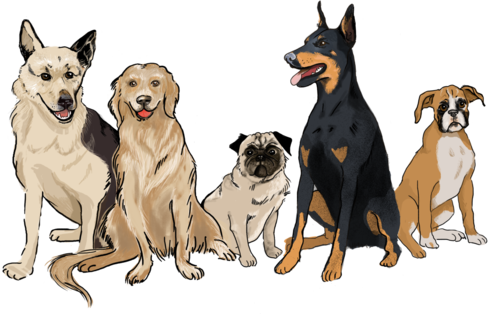
QUESTIONS:
What kingdom of animals do dogs belong to?
The animal kingdom.
What phylum do dogs belong to? Why do you say so? Give a reason for your answer.
Dogs are from the phylum Chordata as they are vertebrates, having a backbone and internal bony skeleton.
What class do dogs belong to? Give three reasons why you would classify dogs in this class.
Dogs are mammals as they are endothermic (warm-blooded), they have fur, they have mammary glands, they give birth to live young.
Look at the dogs in the above picture and write down some common characteristics of the animals.
Some common characteristics include: four legs, fur, tail, sharp teeth, snout (elongated nose), pointy ears, paws with claws, a snout.
Do you think these dogs are part of the same species? How would you know? Discuss this with your class and teacher.
Yes, they are. All the different types of domestic dogs can reproduce with each other to create offspring. The ability to reproduce and have fertile offspring is the definition of a species.
Although these dogs share many characteristics, there are many differences between them. What are some of these differences?
Some differences include fur colour, fur length, body shape, body size, length of legs, length of tails, length of snout, shape of ears, etc.
Another example of variation is horses. Horses all belong to the same species as they can mate and produce offspring which are fertile. This means their offspring are able to reproduce. But there are many different colours and sizes of horses.
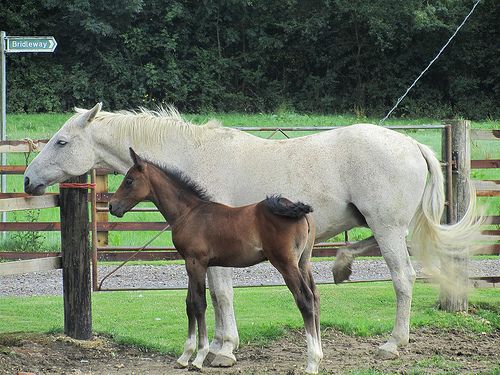
Horses and ponies are from the same species. But what about donkeys?
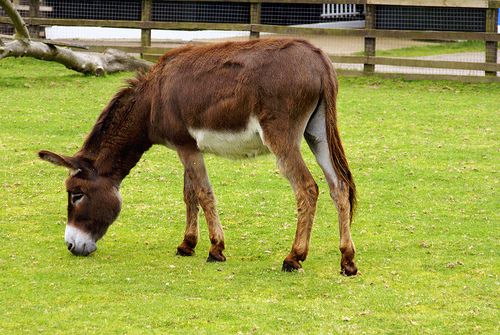
If a horse and a donkey mate, they are able to produce offspring, but the offspring are infertile. They are called mules or hinnies. Do you think donkeys and horses are the same species? Give a reason for your answer.
Horses and donkeys are not the same species as they are not able to produce fertile offspring which can reproduce.
Both belong to the family Equidae and the genus Equus, but they are different species. The domestic horse is from the species Equus caballus and the domestic donkey is from the species Equus asinus. This question was included to reinforce the concept of a species being organisms which can reproduce to produce fertile offspring.
All living organisms that reproduce sexually produce offspring that are different from the parent organisms. Remember that we learned about sexual reproduction in angiosperms and humans in the last chapter. This allows the new organisms to be different to other organisms within the same species. We call this difference variation. As we saw in the last activity, all dogs on Earth are actually the same species, as well as horses, but there are huge differences between all the individuals. We say there is variation.
Even animals from the same litter or children from the same parents have differences. Take a look at the kittens in the box below. They are all from the same litter so they share the same parents, but they all look different.
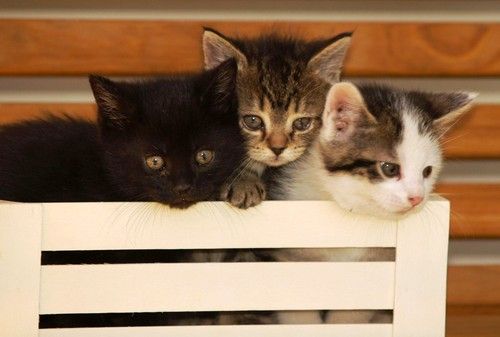
Humans are all one species. Do you remember what the species name is for humans?
Homo sapiens.
All humans on Earth are from the same species, and yet there is huge variation among us. Look at the following photos of people from around the world.
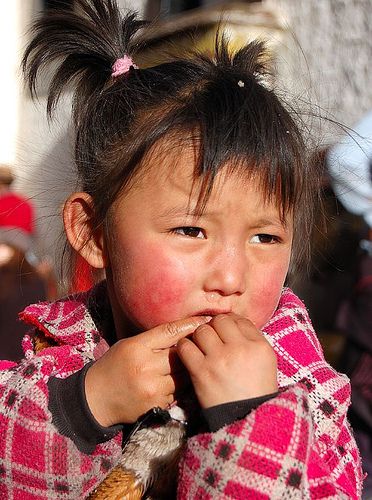

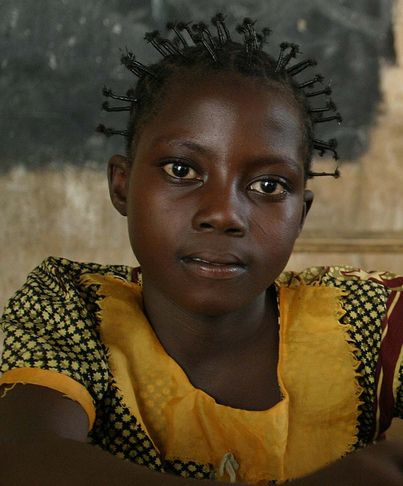

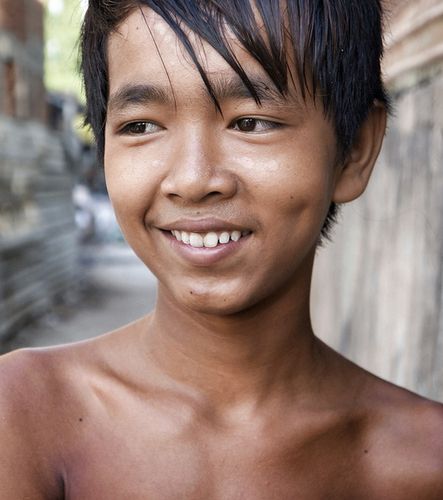
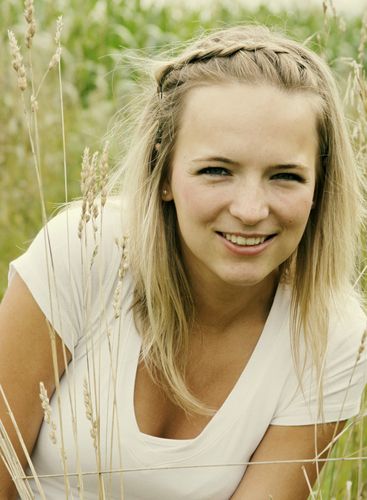
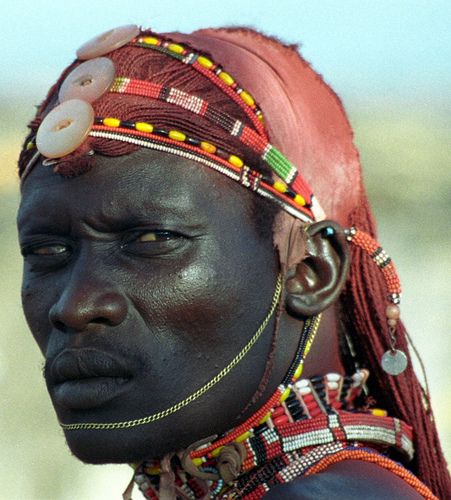



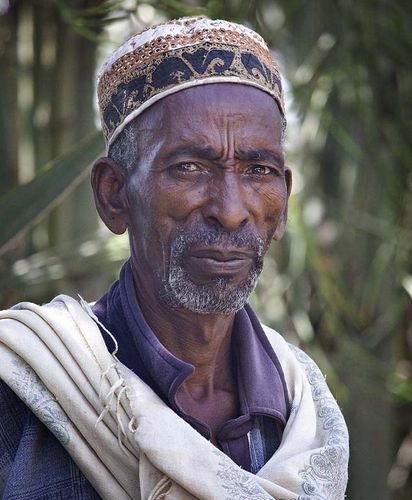
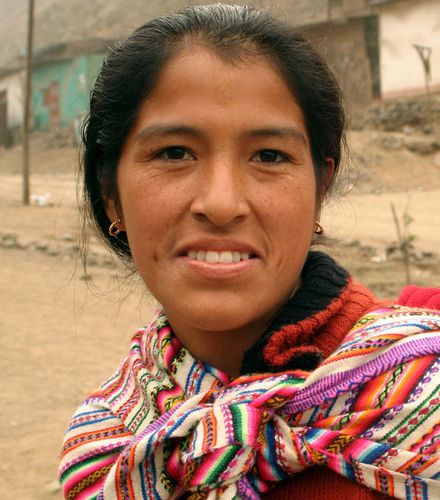
South Africa is an amazing example of diversity amongst our people. Just have a look at your class and how much variation there is between all of you in one class. Some learners may be tall and others may be shorter, some have dark hair, some have blonde or brown hair, and there is a range of skin colours in South Africa. Since you are all from the same species this is another example of variation. Let's have a look at how your class varies in height.
As a homework task, outlined in question 4 below, learners need to measure the heights of some of the adults in their family. First ask learners if this is possible. You can either get learners to do this the day before you do this activity and bring this information to class with them so that you can finish the activity and discussion off in one lesson, or you can do the activity, then complete the homework task afterwards.
If measuring adults in their family might be awkward for some learners (culturally, no adults at home or other difficulties) then you could arrange to measure the height of the Grade 6 and Grade 9 learners as an investigation.
MATERIALS:
INSTRUCTIONS:
This activity could be used to introduce the concept of reliability in scientific investigations. Explain to your learners that sometimes mistakes creep into our scientific measurements and we record the wrong results. We overcome this by repeating the same experiment a few times and if we get the same (or very similar) results we can trust our results as being reliable. To illustrate this you can set up a couple of measuring stations where learners can take turns being measured and taking the measurements. Each learner can be measured 3 times and then you can calculate an average.
Use the following space to record the heights of learners in your class in a table.
If you have a big class, you can divide learners up into groups of 10 and they can just record the heights of their group and use this to draw a graph.
Now use this information to draw a graph to represent the information. You will need to draw a bar graph. Think about what must go along the horizontal x-axis and what must go along the vertical y-axis. Remember, the x-axis is for the independent variables and the y-axis is the dependent variable. Give your graph a heading.
Guide learners through this activity to draw a graph. The learners' names are the independent variables in this activity and so their names must go along the x-axis. The heights are dependent on the learner so the height goes along the y-axis.
Learner-dependent answer
As an extension, you can draw a histogram graph to illustrate the difference between these two types of graphs. To do a histogram graph, you will need to create ranges of heights and then count how many learners fall into each range. The height ranges go along the x-axis and the number of learners that fall into each category goes along the y-axis. Using this graph, you can easily see what the most common height range in the class is.
QUESTIONS:
Do you remember how to calculate an average? You need to add up all the individual measurements, then divide by the number of learners you have measured.
Who is the tallest and who is the shortest in your class?
Class-dependent answer.
What is the average height of all the learners in your class? Use the following space to show your working for this calculation.
Learner-dependent answer.
What is the average height of the boys and what is the average height of the girls? Use the space to show your working.
Learner-dependent answer.
As a homework activity, measure the heights of some of the adult members in your family. Record these heights in the following space to discuss with your class the next day.
Learner-dependent answer.
A correlation is a relationship between two or more sets of measurements or objects (items or things).
This discussion is meant as an entry point into the next section on inheritance. We will do one more short activity on similar characteristics between family members, before looking at inheritance in more detail. Use this discussion as an opportunity to introduce the concept of correlation. See if you can find some examples of correlation between the tallest learner in the class and the heights of his or her family members and the shortest learner in the class and the heights of his or her family members to illustrate that height is a trait that is often passed down in families.
We have now seen that there is huge variation between all the people on Earth, and even in your class. But, there are also lots of similarities, especially between family members, such as height and skin colour. These characteristics (or traits) are passed down from one generation to the next in a family. We say they are inherited traits. Let's look at this a bit more.
We say that certain traits are passed down from generation to generation over many years, from parent organisms to their offspring. This is called inheritance.
We can use the wordinheritance in different ways. When someone dies they may leave an inheritance of money, a home, car or other physical belongings to their children or other people. In Science, inheritance is how parents pass on traits or characteristics to their children.
There are some traits which are very easy to see how they are inherited, such as skin colour or height. Did you know that some people are able to wink with one eye but not with both? Or that others can only see some colours but not all the colours - this is called colour blindness. Let's find out a bit more about some of these inherited traits.
Learner-dependent answer.
One of the very interesting inherited traits is the ability to roll your tongue.

Can you roll your tongue? Can your family members roll their tongues?
Learner-dependent answer.
You may need to help learners to work out the percentage. To calculate the percentage, you need to:
|
Characteristic |
Illustration |
Number of learners with the characteristic |
Percentage of learners with the characteristic |
|
Tongue rolling |
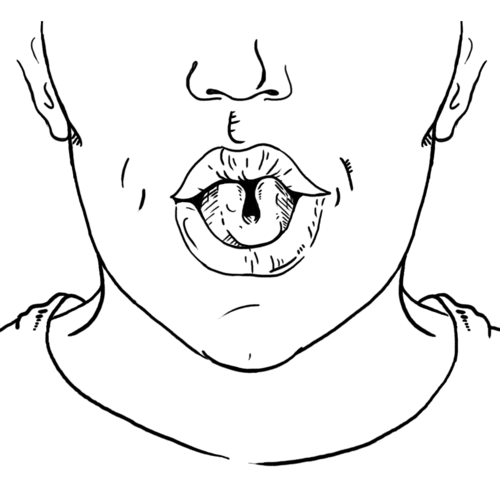 |
||
|
Thumb shape |
 |
Hitchhiker thumb: Straight thumb: |
|
|
Dominant hand |
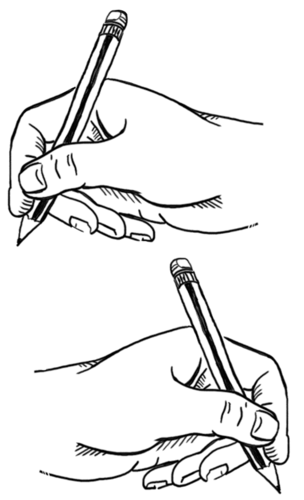 |
Right-handed: Left-handed: |
|
|
Attachment of earlobe |
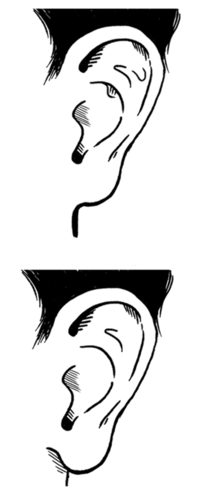 |
Attached earlobe: Unattached earlobe: |
|
|
Dimples |
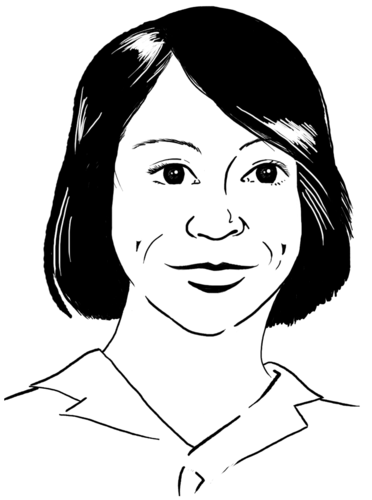 |
||
|
Second toe length |
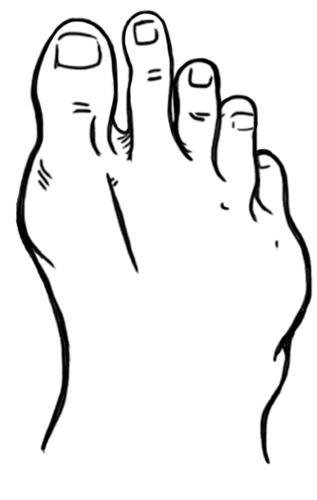 |
Longer second toe: |
|
|
Vulcan sign |
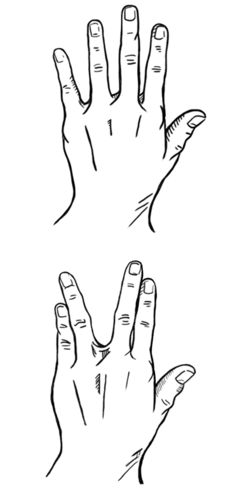 |
When you have collected all the data and have worked out the percentage of learners that have a certain trait, draw a bar graph in the space provided. Remember to label your graph and to give it a heading.
A possible homework activity: Use the above characteristics and see what family members at home can do and if they share the same characteristics or not. Calculate the percentage of family members that can roll their tongues or not.
How does variation in a species help it to survive?
This section is extra information and not crucial for you to go through with your learners if time does not permit. But it links well with what learners will do in later grades if they carry on with Life Sciences.
Have you ever heard the saying: "survival of the fittest or strongest"? This refers to the way in which the organisms are able to survive in their environments because they have adapted the best or they have certain characteristics which allow them to survive better than others.
Watch a video that explains how natural selection works
Survival refers to the characteristics that allow the members of a species to thrive and reproduce successfully so their advantageous characteristics are passed on successfully. Thus over generations the entire species can survive as the majority of its members happen to have inherited the advantageous characteristics.
For example, imagine some impala in one group in a game reserve started to develop a characteristic, which was passed down from the parents to the offspring, allowing them to run faster for longer. The impala in this group can then run faster than the impala in another group. Over time, the faster impala will be able to escape the predators such as cheetahs and lions more often and so they will live long enough to reproduce and raise their offspring successfully. They will therefore pass on the swift running characteristic. The slower impala will get caught more often and so they will not survive to produce offspring. The slower impala are slowly removed over time. The characteristic making some of the impala faster allows those impala to survive and pass this trait on to their offspring. This is the principle of natural selection.
Explore natural selection by controlling the environment and causing changes in rabbits. (simulation) http://phet.colorado.edu/en/simulation/natural-selection
Visit the PhET website for ideas on how to construct a lesson around the simulation on Natural Selection identified here in the visit box. http://phet.colorado.edu/en/simulation/natural-selection
Let's look at a famous and interesting example of how variation in the peppered moth allowed for natural selection.
Play the evolution game and hunt for peppered moths! http://www.recercaenaccio.cat/agaur_reac/AppJava/resources/documents/20100205-betularia19847.swf?idioma=en
This is an extension activity that you can do with your learners if they have time, or get them to do it as a homework activity.
INSTRUCTIONS:
The peppered moth's story of evasion
The peppered moth has been studied in a lot of detail over the past 200 years as it has a very interesting evolution over a short time period. Originally, most of the peppered moths were a light, speckled colour, as you can see in the top moth in the image. This colouring allowed the moths to be camouflaged when they rested upon the light-coloured trees and lichens in their habitat. However, not all the peppered moths were this light colour. There was some variation and there were a few which were a much darker, grey colour. They could not camouflage themselves as well as the light coloured one. The darker coloured moth is shown below in the following image.
The location of this fabulous example of natural selection was the city of Manchester in England. The first observation of a dark black peppered moth occurred in 1848. However, by 1895 98% of peppered moths in the city were dark!
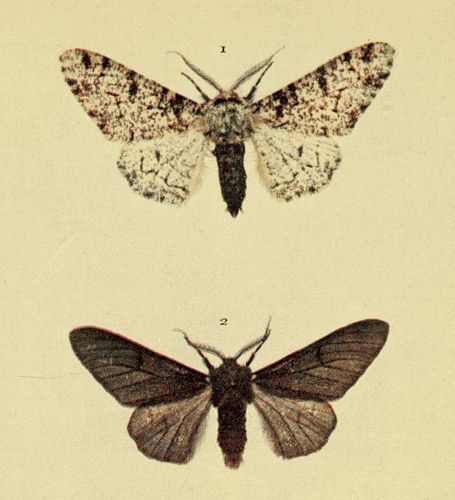
During the Industrial Revolution in England, there was a huge increase in the number of factories. These factories mainly burnt coal as an energy source, which increased the amount of pollution and soot in the air. The pollution caused the lichen on the trees to die off. The soot coated the trees in the peppered moths' habitat. These trees now did not have any lichen and they were a dark grey colour because of the soot covering them.
The light coloured moths were therefore not camouflaged anymore and could be seen easily by predators when they rested on the trees. As a result, more of the light-coloured moths were eaten by birds and didn't have a chance to mate and lay eggs. Therefore the number of light-coloured moths decreased. In comparison, the few moths that were a dark grey colour were now at an advantage as they were now the same colour as the soot covered trees and could hide. These darker-coloured moths could therefore go on to have more offspring. Over time, this resulted in more and more of the moths being dark-coloured.
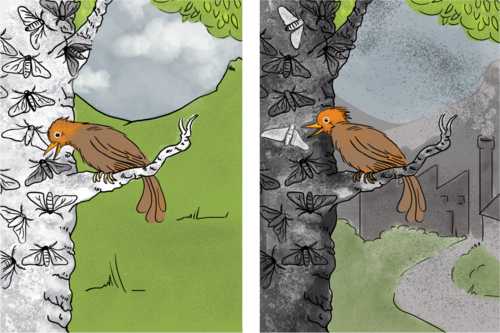
QUESTIONS:
When the moths land on the trees and they are camouflaged, what are they hiding from?
The camouflage helps them to hide from predators such as birds which eat them.
Why do you think there were only originally a few of the dark coloured moths, and there were lots of light-coloured moths?
The light-coloured moths were originally dominant. The dark ones were a variation which started to develop. But, originally, they could be easily seen on the light-coloured trees covered in lichen and so the birds could see them more easily than the light ones and so ate them. This kept the number of dark moths down.
Why do you think the dark grey moths started to increase over time after the Industrial Revolution?
After the industrial revolution, the dark moths were now better camouflaged on the dark, soot-covered trees. The birds could not see them as easily, and the light moths were clearly visible, so the birds started to eat the light coloured moths more than the dark coloured moths. The dark moths were able to survive and reproduce more, thereby passing on their dark trait to their offspring. This increased the numbers.
Since the Industrial Revolution, the numbers of light-coloured moths have started to increase again due to improved environmental standards. Why do you think this is?
We are now more environmentally aware, and use more electrical machines and fewer coal-powered machine. As a result, there is less pollution and soot in the air. This means these habitats are more protected, so the trees are not covered in soot and lichen is able to grow. Therefore, the light moths are once again better camouflaged on the trees and so avoid predation, whilst the dark grey moths are now clearly visible again.
We have now looked at how variation within a species helps it to adapt to its changing environment and therefore survive. But, these changes do not happen quickly. Although small changes can happen within a few generations, big changes take a very, very long to happen over thousands of years.
10 reasons to love science (video)
Concept map
This was a short section and so we have a smaller concept map than in the previous sections.
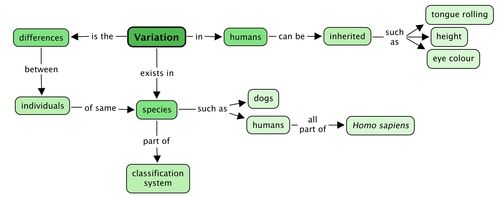
Are dobermans, terriers and bulldogs from the same species? Give a reason for your answer. [2 marks]
All these dogs belong to the same species because if they breed, the offspring are fertile and can breed again.
A new breed of cat has been developed, called the munchkin cat. Breeders specifically tried to breed a cat with very short front legs. Explain how you think they achieved this. [2 marks]
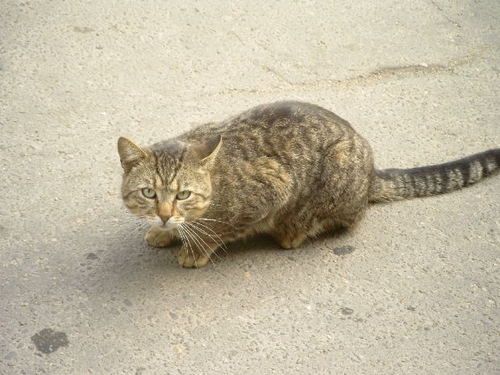
People observed some cats that were born with shorter than average front legs and then mated these cats with other cats with shorter front legs until over time they had cats with increasingly shorter legs.
Predict whether you think munchkin cats would be able to hunt as well as other cats with normal length front legs. [2 marks]
They would probably not be able to jump, catch and claw their prey or be as fast as other cats, so they would probably not be as good at hunting as other cats.
Do you think it is correct for humans to breed animals in this way? Explain your answer. [2 marks]
Learners are required to give a value judgement. Some might agree that it is the right of humans, but others might feel that humans are being cruel and that it is wrong.
Explain in your own words what you understand by the term "inherited characteristics". [2 marks]
This means that the characteristics (traits) are passed down from the parents to the offspring from one generation to the next.
A species takes a long time to adapt as the individuals which have the trait which gives them an advantage are usually in the minority when the trait first starts to emerge. These individuals need to reproduce to pass on their trait. This takes over many generations. Only after many generations will the trait start to be dominant in the species as more and more individuals are born with the advantageous trait. Species which reproduce quickly and have short generation times (short life spans), such as moths, will evolve over a quicker time period than species which have long life spans and reproduce less, such as humans.
This is an extension question.
Total [12 marks]
|
Previous
Chapter 3: Sexual reproduction
|
Table of Contents |
Next
Chapter 5: Life and Living Glossary
|